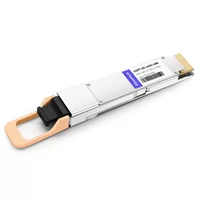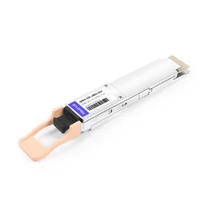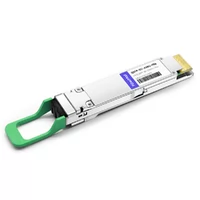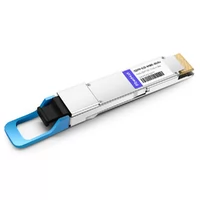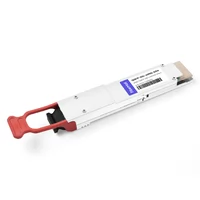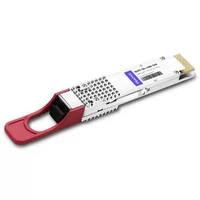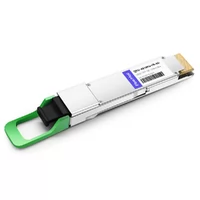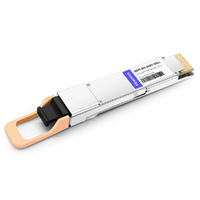As the data transmission industry is constantly changing, there’s a greater need for faster, more efficient connectivity options than ever before. Meeting these needs is QSFP-DD (Quad Small Form-factor Pluggable Double Density) 400G optical transceivers, which support high bandwidth connections ranging from data centers to telecommunications. This guide will give readers an in-depth understanding of what QSFP-DD 400G optical transceivers are by looking at their design specifications, features, and benefits. We intend to provide you with all the technical details about how they work so that when it comes to using them in your high-speed networks, you can do so knowledgeably.
Table of Contents
ToggleWhat is a QSFP-DD 400G Transceiver?
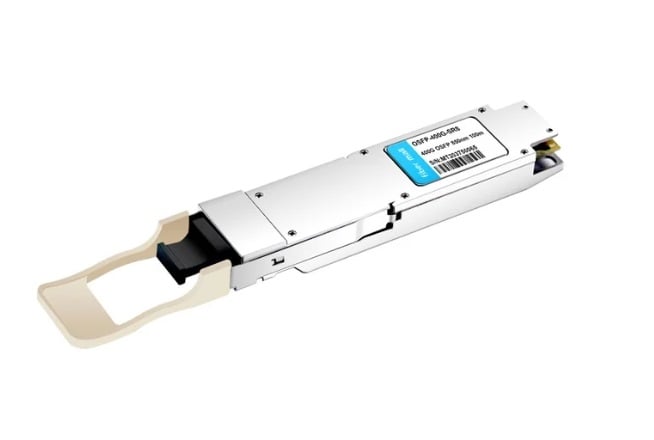
Basics of QSFP-DD Technology
The QSFP-DD technology can double the number of ports used in data transmission while keeping the same size as the previous version, QSFP. It has been developed to provide better use of bandwidth and supports 400G applications. The interface of QSFP-DD carries both optical and electrical signals over eight lanes that transmit at a rate of 50G each, which adds up to an overall throughput speed of 400 G. This design is backward compatible with current QSFP connections, thus enabling easy adoption into existing network systems.
How Does a QSFP-DD Transceiver Work?
The internal architecture of a QSFP-DD transceiver is quite complex, and its operation is controlled by this sophisticated structure, which efficiently handles sending and receiving optical signals. The laser driver, optical transmitter, photodetector, and digital signal processor (DSP) are some of the key components found in the transceiver.
When data is being transmitted, electrical signals are converted into optical ones through a DSP that makes use of an optical transmitter powered either by vertical-cavity surface-emitting lasers (VCSELs) or other types of lasers, depending on the application at hand. Each lane works in parallel thus enabling 400G data transfer rate where each lane carries 50G bandwidth.
At the receiver end, the photodetector captures incoming light waves before converting them back to their original form – electrical signals. Here again, DSD contributes significantly as it uses error correction methods coupled with advanced techniques to ensure integrity over noisy channels and degraded ones.
Single mode fibers or multimode ones can be used for transmitting data through these units which determine how far they can reach and what bandwidths they support among others things like maximum distance covered during transmission process etc For example; multi-mode usually permits shorter distances while single-mode might allow more than ten kilometers but still maintains high rates.
As such cutting-edge technologies combined with components make QSFP DD optical transmitters capable enough to satisfy demand for high speed communication especially within data centers interconnects HPC telecom networks among others.
Applications in Data Centers
In modern data centers, network devices exchange information using the QSFP-DD optical transceiver. This device increases bandwidth in interconnected data centers where large amounts of data are transferred. It can support existing infrastructures and allow for upgrades to 400G networks with minimal changes. Moreover, its compact size and high-density help optimize space usefulness, which is critical in contemporary data center designs. High-performance computing relies on fast access to data over low-latency connections, while telecommunications require reliable and speedy transmission of voice, video, and data services. The use of these transceivers guarantees maximum performance, scalability, and future-readiness against increasing demand for storage capacity within organizations.
How Does a 400G QSFP-DD Compare to Other Modules?
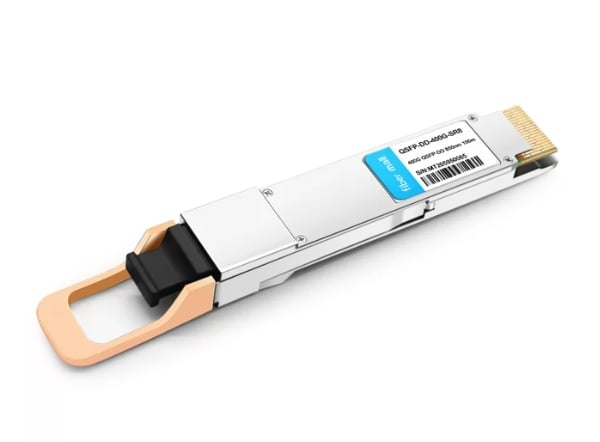
Differences Between 100G and 400G Standards
The jump from 100G to 400G standards is a major step in data transfer capabilities due to the demand for faster and high-speed networking.
Bandwidth Capacity:
- 100G: This uses single-wavelength technology, which can be based on 100G Ethernet or 4x25G WDM (Wavelength Division Multiplexing), thus allowing combined throughput of up to one hundred Gbps.
- 400G: In contrast, it uses four lanes of one hundred Gbps each or a single lane with advanced modulation methods like PAM4 (Pulse Amplitude Modulation), allowing as much as four hundred Gbps per port.
Transmission Distance:
- 100G: It usually has effective transmission distances between about one hundred meters over multimode fibers and more than one hundred kilometers over single-mode fibers.
- 400G: It can achieve similar distances but is increasingly designed for advanced configurations using dual-fiber or parallel optics, ensuring efficient long-haul communications of up to five hundred meters on multimode fibers and one hundred kilometers on single mode under ideal conditions.
Layering and Complexity:
- 100g – Usually simpler design with easy implementation widely adopted in existing architectures.
- 400g – More complex system designs requiring sophisticated network switches, routers, and improved monitoring solutions capable of handling increased data loads.
Power Consumption:
- 100g – Port power consumption ranges from three watts to five watts, depending on the type used.
- 400g – Higher wattage usage ranging between six watts through twelve watts per port through technological advancements continues reducing these costs while enhancing energy efficiency overall observed.
Cost:
- 100g – Economical due to its market maturity coupled with well-established supply chains.
- 400g – High initial expense caused by new technologies, but prices should drop as production scales up and adoption widens, becoming more common over time.
In conclusion, the transition from 100G standard to higher speeds of 400Gbps was necessitated by bandwidth hunger, among other factors.
Comparing QSFP-DD with QSFP28
The QSFP-DD and QSFP28 are both high-speed transceiver modules designed for use in data centers. However, they differ significantly when it comes to capacity and function.
Bandwidth Capacity:
- QSFP-DD: This type of connector can support up to 400G bandwidth by using twice the number of electrical lanes as its predecessors, allowing for much higher data transfer rates.
- QSFP28: This module is designed specifically for 100G applications where typically, four lanes of 25G each are used. It is mainly suited to legacy systems or environments with lower bandwidth demands.
Physical Form Factor:
- QSFP-DD: The size of this connector is slightly larger than that of QSFP28 because it has an extra pin row that enables increased density thus supporting higher rates. This should be taken into consideration when looking at rack space utilization or cooling efficiency.
- QSFP28: On the other hand, being smaller in size means more connections can be packed closely together making it ideal for facilities with limited physical space available within their infrastructure.
Backward Compatibility:
- QSFP-DD: Generally compatible backwardly with QSPF28, which makes it easy to integrate into existing networks while allowing gradual migration towards higher capacity systems.
- QSFS28: Not natively forward-compatible with QSPF – DD, meaning additional performance upgrade planning will need to take place.
In conclusion, though these two types serve different purposes within network architecture, namely cost-effective solutions like quips that cater only a hundred gig applications compared against future-proofed designs such as those offering thousands, there’s no denying they’re both equally important.
Advantages in Network Performance
Several significant benefits exist with the employment of advanced transceiver technologies such as QSFP-DD and QSFP28 that notably improve network performance.
- Higher Bandwidth: Offering up to 400G, the QSFP-DD experiences a massive increase in bandwidth capabilities. This higher bandwidth allows for greater traffic volume and increases data transmission speed across data centers and other environments where there is heavy traffic.
- Latency Optimisation: By enhancing its design, the architecture of QSFP-DD reduces latency when transferring packets. This is particularly critical for real-time data processing applications, as it ensures timely handling of time-sensitive information.
- Scalability: Backward compatibility between QSFP-DD and QSFP28 makes seamless upgrades possible, which also enhances scalability. Higher capacity transceivers can be introduced into evolving networks without requiring a complete replacement of the entire existing infrastructure, thereby increasing operational efficiency.
- Energy Efficiency: Energy efficiency improvements arise from newer designs since they yield better energy-efficient performance due to their ability to transmit more data at lower power consumption levels. In addition to reducing operating expenses, this is congruous with rising global sustainability standards.
To sum up, the use of QSFP-DD and QSFP28 transceivers protects investment in network infrastructure, improving network performance and creating future-ready networks able to handle increasing demands brought about by technological advancements and growing data traffic volumes.
What are the Key Features of QSFP-DD Optical Transceivers?
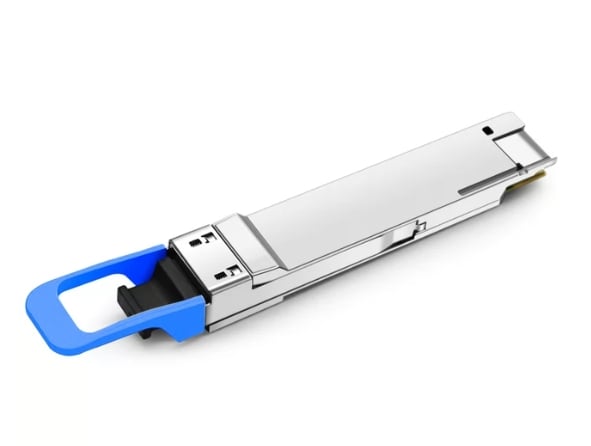
Form Factor and Design Considerations
The QSFP-DD optical transceiver is designed to be compact and dense, allowing it to fit into existing network systems. It has a width of about 18.3mm and can accommodate dual-density designs, enabling the transmission of up to 400G data in one slot. Featuring a sturdy construction with a latch for secure installation and removal, thermal management benefits from enhanced airflow design. The use of advanced materials increases durability and reliability, guaranteeing consistent performance across different operating environments. This design complies with current standards while also considering future scalability requirements for high-demand network situations.
Understanding Compatibility and MSA Compliance
When deploying QSFP-DD optical transceivers, compatibility is key as they must work with the networking hardware already in place. These devices are built according to the Multi-Source Agreement (MSA), which lays down standards for specifications so that different manufacturers’ equipment can talk to each other. MSA compliance means a QSFP-DD transceiver will operate reliably in multiple networking environments where vendors may vary. This consistency is critical for preventing any problems during upgrades or expansions, causing organizations to worry about mixing and matching components from various suppliers. Thus it becomes imperative to check if something is compliant with MSA because this ensures trustworthy network performance while future-proofing installations against evolving technologies.
The Role of PAM4 Technology
Pulse Amplitude Modulation 4-level (PAM4) technology has a critical role in improving the data transmission capacity of optical transceivers like QSFP-DD. Using four distinct signal levels, PAM4 doubles the amount of information that can be sent per symbol compared to binary signaling (2-level PAM), resulting in significant bandwidth increases without adding more physical infrastructure.
For example, whereas a standard 25Gbps signal uses single-level PAM, PAM4 allows for 50Gbps transmission speeds over the same channel, thereby maximizing the use of the available spectrum. This is particularly useful in high-density data center environments where there is an ever-increasing need for higher throughput. Recent applications of this technology show up to 400G data rates through QSFP-DD modules, proving its efficiency and scalability for future networking demands.
In addition, it supports advanced error correction schemes that help reduce impacts due to long-distance signal degradation, thus ensuring reliable performance even under difficult operating conditions. Therefore, organizations seeking optimal network performance must adopt pam4 to accommodate growing traffic loads with minimal infrastructure changes.
How Do You Install and Maintain a QSFP-DD 400G Transceiver Module?
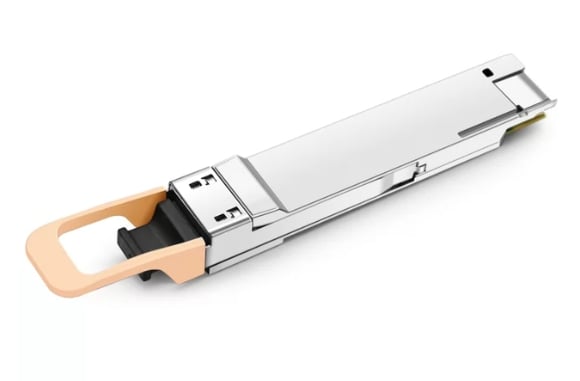
Installation Procedures
The following steps illustrate the procedures involved in installing a QSFP-DD 400G transceiver module. This is a process that should be carried out with a lot of care to achieve maximum performance and reliability.
- Preparation: Before commencing installation, ensure you have all necessary equipment including an ESD wrist strap for protection against static electricity as well as verifying compatibility between your specific hardware platform and the transceiver module.
- Power Down the Device: To avoid electrical shocks or damaging either the module or any part of the system, safely shut down all networking devices.
- Inspecting the Transceiver: Carefully open the packaging containing QSFP-DD transceivers, avoiding touching optical connectors, which may lead to contamination. Examine modules for physical damages/defects, then confirm specifications match deployment requirements.
- Insert The Transceiver: Make sure that you are aligning it with the correct port on the equipment before gently sliding it into place until there’s a click sound indicating proper insertion, followed by secure seating where the latch mechanism engages fully.
- Power Up The Device: After successfully inserting the device into position, proceed to power on your network device. Keep watching its status indicators so as to determine whether or not this new addition has been recognized and is operational.
- Test Connectivity: Once powered up, run diagnostic tests to verify if everything works well within this area, especially when dealing with optical connections whose link status should read “up” in your device’s management interface.
- Monitoring And Maintenance: Through regular checks done via network management systems over several months or even years, one can easily spot changes in performance metrics such as temperature levels, voltage variations, error rates, etc. It’s also important during scheduled maintenance periods where potential problems may arise affecting overall system performance but still allow some time before they become critical.
Organizations can guarantee effective installation and longevity of their QSFP-DD 400G transceivers by closely observing these procedures thereby improving overall networking capabilities.
Common Connector Types: MPO and LC
Choosing the right type of connector is critical for high-speed optical networks to work properly and be compatible with each other. The MPO (Multi-fiber Push On) connector is meant for high-density applications and is capable of housing many fibers in one rectangular interface. Typically found within data centers or as part of backbone installations, MPOs can hold up to 12 or 24 fibers, which helps them connect efficiently where space is limited.
In contrast, the LC (Lucent Connector) has become a standard single-fiber connector used in numerous telecommunication applications because it has a small form factor and produces low insertion loss. Patch panels and transceiver modules frequently utilize LC connectors that ensure reliable connections are established between both single-mode and multimode fibers. For network design optimization purposes, it’s important to understand how different characteristics affect usage suitability between these two types of connectors – namely MPOs versus LCs.
Maintenance and Support Tips
A routine maintenance schedule is critical to ensure the reliable operation of QSFP-DD 400G transceiver modules. Based on industry best practices, here are some key recommendations:
- Visual Inspection: Inspect transceiver modules and connectors regularly for any signs of damage or wear. This includes checking for dust or contaminants that might affect performance, especially at connector interfaces.
- Temperature Control: Transceivers should be kept within a suitable operating temperature range, as excess heat can cause reduced efficiency and early failure. It is advisable to use monitoring systems which will help keep track of temperature readings continuously.
- Firmware Updates: Performance can be improved, bugs fixed and compatibility with network devices enhanced by manufacturers’ firmware updates which should be checked for periodically and applied accordingly.
- Cleaning Procedures: For optimal data loss minimization and signal integrity maintenance optical connectors should be cleaned using appropriate solutions along with lint-free wipes among others methods employed.
- Documentation & Logs Maintenance activities carried out, inspections done, irregularities noted should all be documented in detail so that they can assist when troubleshooting problems related to the system as well as guide decisions on future upgrades or replacements needed.
Following these guidelines ensures organizations are able to extend the lifespan of their network components while guaranteeing peak performance levels are maintained throughout this period.
What are the Use Cases of 400G QSFP-DD Transceivers in Modern Networks?
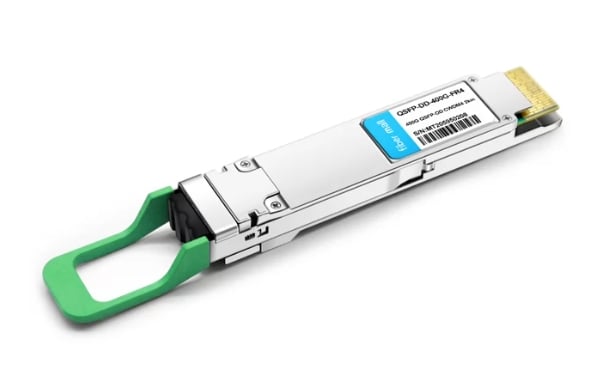
Enhancing High-Density Applications
400G QSFP-DD transceivers are key to meeting the needs of high-density applications in next-generation data centers and enterprise networks. Their small form factor increases switch and router port density, providing more bandwidth while saving rack space. This is especially beneficial for cloud service providers and large enterprises that need fast interconnects for data-heavy tasks like data analytics, virtualized workloads, and real-time processing. 400G technology drives overall network efficiency, decreases latency, and enhances scalability – making it a must-have for future-proof network infrastructure.
Deployments in Data Centers
To improve network performance and meet the demands of increasing data, organizations are increasingly adopting 400G QSFP-DD transceivers in their data centers. These transceivers make high-speed connections between servers, switches, and storage arrays possible, enabling smooth data transfer while minimizing bottlenecks. They can also be used in existing infrastructures, thus allowing easy migration to higher bandwidths without major replacements. With this technology, data centers can better support workloads such as cloud applications, big data processing, and artificial intelligence, resulting in enhanced operational efficiency and lower total ownership costs.
Future Trends in Optical Communication
The ever-growing need for faster and more efficient data transmission has made optical communication technology the most promising technology in the coming years. Some of the trends that are shaping this field include:
- Artificial Intelligence Integration: By predicting traffic patterns and dynamically managing resources, AI will play a pivotal role in optimizing network performance. This integration seeks to improve service reliability while reducing operational costs.
- Improvements in Wavelength Division Multiplexing (WDM): The evolution of WDM technologies is set to increase fiber optic networks’ capacity, allowing multiple signals to be transmitted simultaneously through one optical fiber. Consequently, this leads to better utilization of existing infrastructure and increased overall bandwidth.
- Photonic Integrated Circuits (PICs) Development: PIC technology miniaturizes optical components, enabling the creation of smaller, more efficient devices, thus advancing capabilities within optical networks further. This evolution supports higher data rates with minimum power consumption management.
As such, these trends suggest continuous advancement into new frontiers by optical communication aimed at meeting growing data requirements coupled with challenges in expanding network systems.
Reference Sources
Frequently Asked Questions (FAQs)
Q: What is a QSFP-DD 400G Optical Transceiver?
A: The QSFP-DD 400G optical transceiver module is designed for Ethernet applications with a speed of 400 Gigabits per second (GbE). It is a compact and high-speed device that supports the data transmission rate and bandwidth in High-Performance Computing networks.
Q: What are the main specifications of 400G QSFP-DD ER4 transceivers?
A: Commonly used in telecom networks, large-scale data center interconnects, and other such areas, the 400G QSFP-DD ER4 transceivers are designed to meet fast data transfer requirements over long distances. They operate using single-mode fiber (SMF) link lengths up to 40 kilometers at a wavelength of 1310nm.
Q: How does a 400G DR4 QSFP-DD transceiver differ from other optical transceiver modules?
A: For short-distance applications within data centers, the best option is to use a DR4QSFPDD Transmitter. This device supports SMF links whose lengths do not exceed five hundred meters and employs MPO-12 connectors due to its four lanes that transmit signals at PAM4 rates.
Q: Can I use breakout cables with QSFP-DD modules?
A: Breakout cables can be used with these types of ports, such as those configured for four by one hundred gigabit connections (4x100G). Therefore, this single port may connect multiple networks, thereby increasing flexibility.
Q: What are active optical cables (AOCs), and how are they used with QSFP-DD modules?
A: Active Optical Cables(AOCs), which consist of pre-terminated fiber optic links containing electronics for signal processing or amplification purposes, have become common accessories integrated into QSPF DD Modules, which aim to minimize weight while simplifying cabling within power-efficient data centers.
Q: What is the range of 400G QSFP-DD SR8 and SR4 transceivers?
A: The 400G QSFP-DD SR8 transceiver is built for short-range applications and can link up to 100 meters over MMF (Multimode Fiber). On the other hand, the 400G QSFP-DD SR4 module usually supports a maximum distance of about 70 meters using the same type of fiber.
Q: How does the QSFP-DD MSA relate to 400G transceivers?
A: The QSFP-DD MSA (Multi-Source Agreement) consists of companies that define specifications and standards for QSFP-DD modules to ensure interoperability and compatibility among different manufacturers when it comes to their respective products on this platform – particularly those supporting rates as high as four hundred gigabits per second.
Q: What role does silicon photonics play in developing these devices?
A: Silicon Photonics Technology significantly increases performance efficiency in development processes involving such items thanks largely to its ability to integrate optical parts into chips made from or containing silicon material(s). High-speed data transmission becomes possible over longer distances with less energy, thereby reducing its overall costs.
Q: Can you explain why we should care about the IEEE8023bs protocol regarding our transceivers?
A: IEEE8023bs protocols describe what technical requirements must be met by Ethernet connections operating at speeds up to four hundred gigabits per second. These rules ensure that different brands work together seamlessly while providing reliable service quality levels throughout their lifetimes regardless of where they were manufactured initially so long as all parties involved comply fully with laid down guidelines governing use cases permitted under this arrangement, which include but aren’t limited only to physical layer specifications applicable across various media types linking multiple lengths between them.
Related Products:
-
 QSFP-DD-400G-SR8 400G QSFP-DD SR8 PAM4 850nm 100m MTP/MPO OM3 FEC Optical Transceiver Module
$149.00
QSFP-DD-400G-SR8 400G QSFP-DD SR8 PAM4 850nm 100m MTP/MPO OM3 FEC Optical Transceiver Module
$149.00
-
 QSFP-DD-400G-DR4 400G QSFP-DD DR4 PAM4 1310nm 500m MTP/MPO SMF FEC Optical Transceiver Module
$400.00
QSFP-DD-400G-DR4 400G QSFP-DD DR4 PAM4 1310nm 500m MTP/MPO SMF FEC Optical Transceiver Module
$400.00
-
 QSFP-DD-400G-SR4 QSFP-DD 400G SR4 PAM4 850nm 100m MTP/MPO-12 OM4 FEC Optical Transceiver Module
$450.00
QSFP-DD-400G-SR4 QSFP-DD 400G SR4 PAM4 850nm 100m MTP/MPO-12 OM4 FEC Optical Transceiver Module
$450.00
-
 QSFP-DD-400G-FR4 400G QSFP-DD FR4 PAM4 CWDM4 2km LC SMF FEC Optical Transceiver Module
$500.00
QSFP-DD-400G-FR4 400G QSFP-DD FR4 PAM4 CWDM4 2km LC SMF FEC Optical Transceiver Module
$500.00
-
 QSFP-DD-400G-XDR4 400G QSFP-DD XDR4 PAM4 1310nm 2km MTP/MPO-12 SMF FEC Optical Transceiver Module
$580.00
QSFP-DD-400G-XDR4 400G QSFP-DD XDR4 PAM4 1310nm 2km MTP/MPO-12 SMF FEC Optical Transceiver Module
$580.00
-
 QSFP-DD-400G-LR4 400G QSFP-DD LR4 PAM4 CWDM4 10km LC SMF FEC Optical Transceiver Module
$600.00
QSFP-DD-400G-LR4 400G QSFP-DD LR4 PAM4 CWDM4 10km LC SMF FEC Optical Transceiver Module
$600.00
-
 QSFP-DD-400G-ER4 400G QSFP-DD ER4 PAM4 LWDM4 40km LC SMF without FEC Optical Transceiver Module
$3500.00
QSFP-DD-400G-ER4 400G QSFP-DD ER4 PAM4 LWDM4 40km LC SMF without FEC Optical Transceiver Module
$3500.00
-
 QSFP-DD-400G-ER8 400G QSFP-DD ER8 PAM4 LWDM8 40km LC SMF FEC Optical Transceiver Module
$3800.00
QSFP-DD-400G-ER8 400G QSFP-DD ER8 PAM4 LWDM8 40km LC SMF FEC Optical Transceiver Module
$3800.00
-
 QDD-4X100G-FR-4Si QSFP-DD 4 x 100G FR PAM4 1310nm 2km MTP/MPO-12 SMF FEC CMIS4.0 Silicon photonics Optical Transceiver Module
$750.00
QDD-4X100G-FR-4Si QSFP-DD 4 x 100G FR PAM4 1310nm 2km MTP/MPO-12 SMF FEC CMIS4.0 Silicon photonics Optical Transceiver Module
$750.00
-
 QSFP-DD-400G-SR4.2 400Gb/s QSFP-DD SR4 BiDi PAM4 850nm/910nm 100m/150m OM4/OM5 MMF MPO-12 FEC Optical Transceiver Module
$900.00
QSFP-DD-400G-SR4.2 400Gb/s QSFP-DD SR4 BiDi PAM4 850nm/910nm 100m/150m OM4/OM5 MMF MPO-12 FEC Optical Transceiver Module
$900.00

